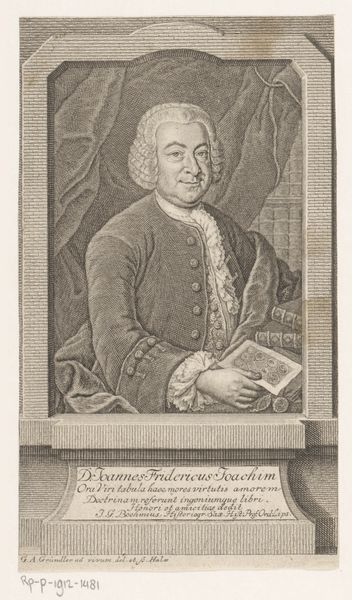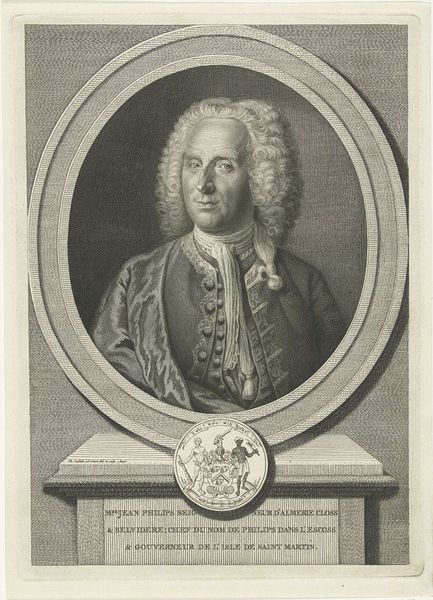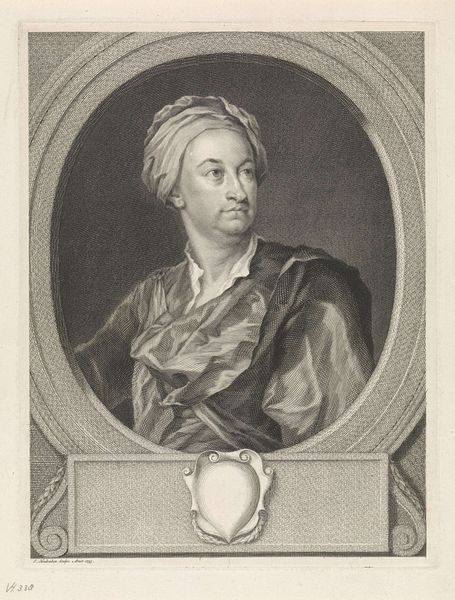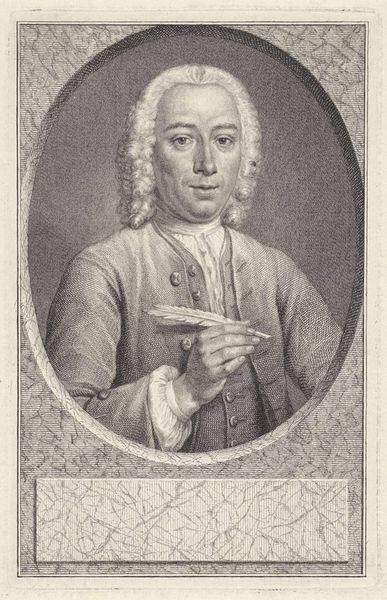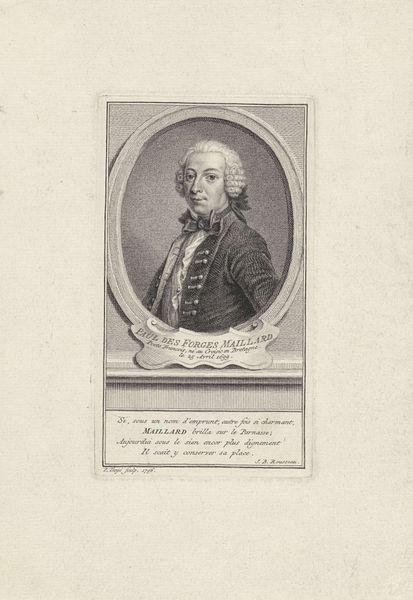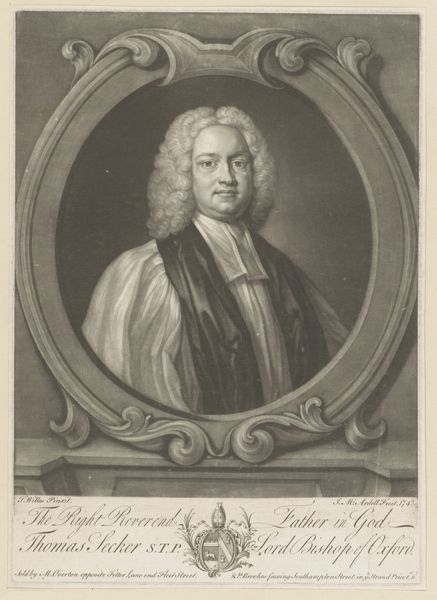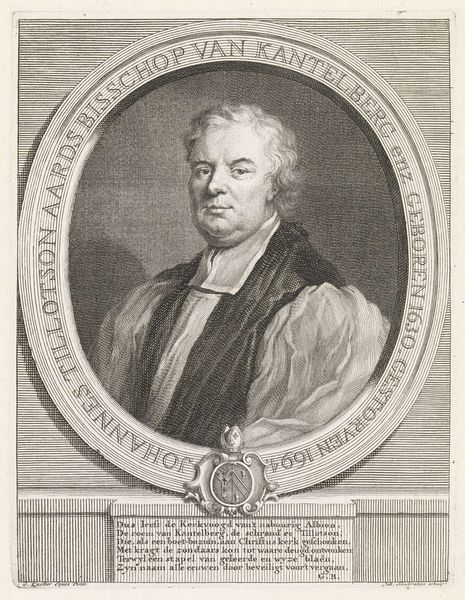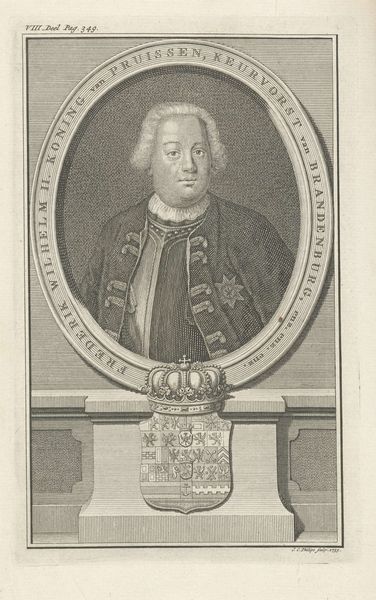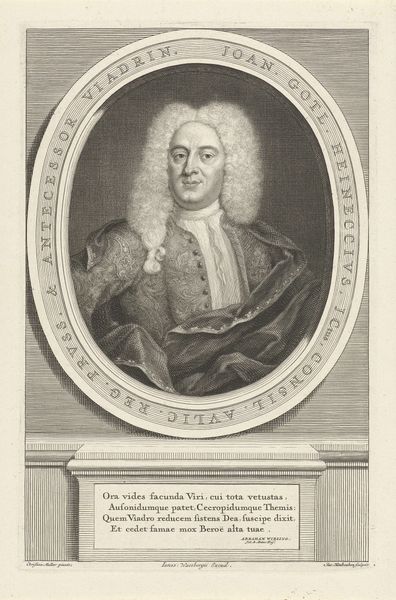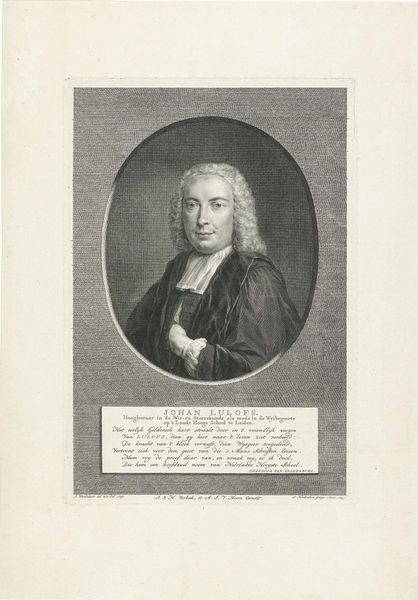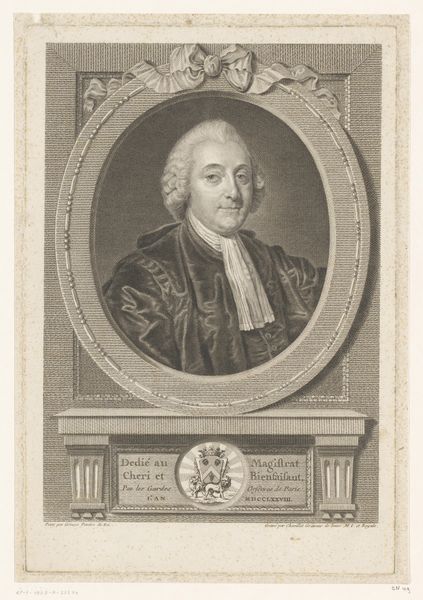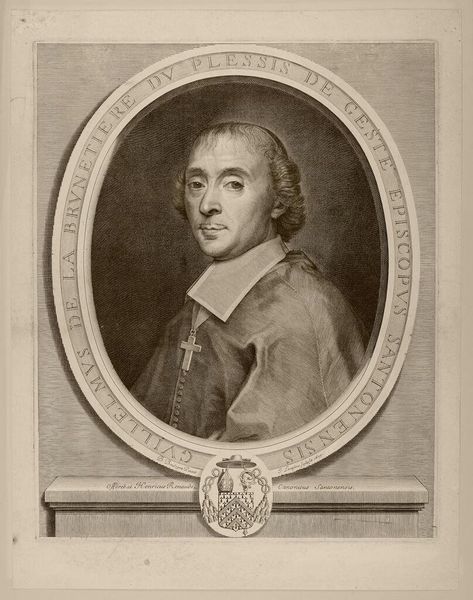
engraving
#
portrait
#
baroque
#
history-painting
#
engraving
Dimensions: height 208 mm, width 151 mm
Copyright: Rijks Museum: Open Domain
Editor: Here we have Pieter Tanjé's engraving, "Portrait of Chrysostome Girardot," created sometime between 1716 and 1761. I'm struck by how it almost looks like a formal photograph, especially the way the sitter seems consciously posed. What historical context informs the public's reception of portraiture at this time? Curator: The key here is the Baroque era's emphasis on spectacle and the rise of a wealthy merchant class. Engravings like this facilitated wider access to portraiture, moving it beyond the exclusive domain of the aristocracy. How do you think this democratization of imagery impacts Girardot’s portrayal? Editor: It's like these portraits created a new form of celebrity, immortalizing people and solidifying their importance in the social fabric of the time. To be captured in an engraving suggested a certain degree of power and influence, almost like social media today. Curator: Exactly! And think about the Rijksmuseum's role in this narrative. By exhibiting this work, we’re not just displaying an image; we’re validating a particular historical narrative, solidifying Girardot's place in the Dutch collective memory. Editor: So, every time the museum exhibits something like this, it’s actually participating in a conversation about who matters in history. Curator: Precisely. Museums aren't neutral spaces; they are active participants in shaping and reinforcing cultural values. Even the framing around the image feels like it further enshrines the importance of the subject! Editor: That’s a perspective I hadn’t considered before. It's amazing to think about all the layers of meaning packed into this seemingly simple engraving. Curator: Indeed, and hopefully that changes how you look at art from now on.
Comments
No comments
Be the first to comment and join the conversation on the ultimate creative platform.
